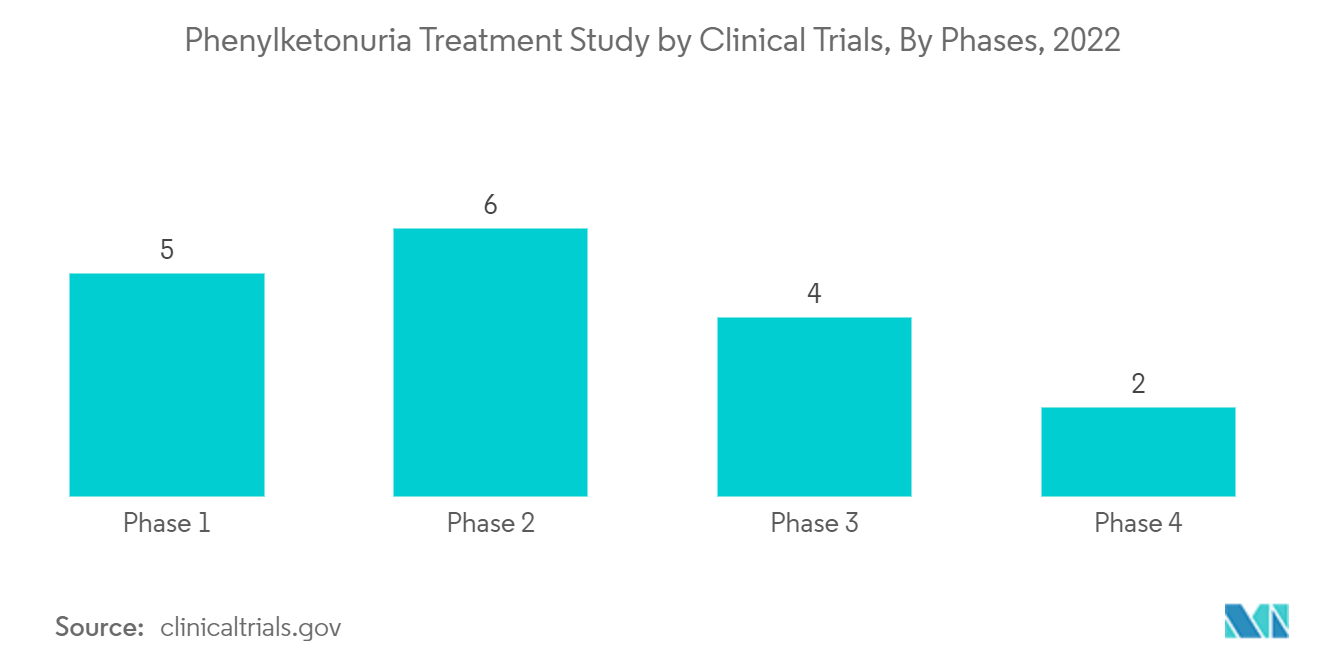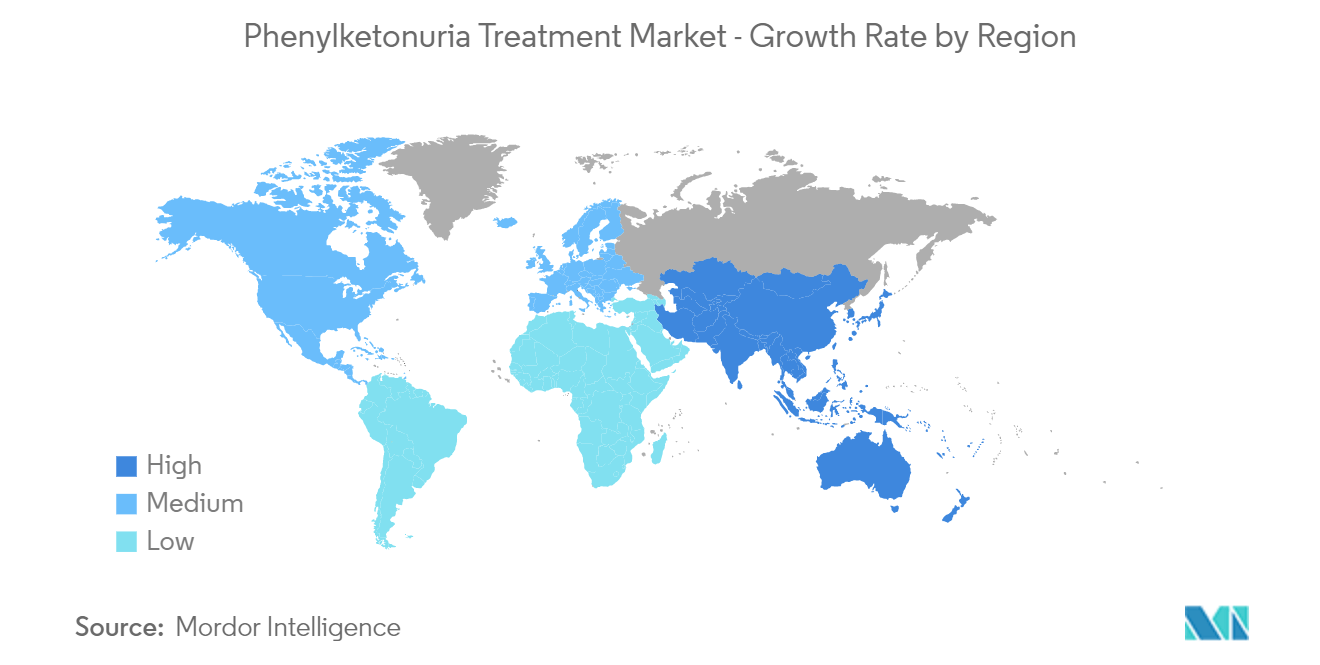Market Trends of Global Phenylketonuria Treatment Industry
This section covers the major market trends shaping the Phenylketonuria Treatment Market according to our research experts:
Kuvan Segment is Expected to Hold a Major Market Share in the Phenylketonuria Treatment Market
Kuvan is the only drug present currently for the efficient treatment of phenylketonuria, which is being manufactured by BioMarin Pharmaceuticals. It adds more BH4 compounds and helps in stimulating the phenylalanine hydroxylase enzyme, which then breakdown the phenylalanine protein. While the increasing launches and developments are further driving the growth of the market. For instance, In April 2021, Dr. Reddy's Laboratories launched the Sapropterin Dihydrochloride Powder for Oral Solution, 100 mg), a therapeutic equivalent generic version of Kuvan (sapropterin dihydrochloride) Powder for Oral Solution, 100 mg, USP, approved by the US Food and Drug Administration (USFDA). For instance, In Aprail 2021, Dr. Reddy's Laboratories has unveiled Sapropterin Dihydrochloride Powder for Oral Solution, 100 mg, a therapeutic equivalent generic version of Kuvan (sapropterin dihydrochloride) Powder for Oral Solution, 100 mg, USP, in the United States.
While the studies revealed the benefits associated with phenylketonuria are further propelling the growth of the market. As per the European public assessment report (EPAR) updated in September 2021, In Phenylketonuria treatment, the main study compared the reductions in blood phenylalanine in 88 patients treated with either Kuvan or placebo (a dummy treatment). Two other studies in 101 patients looked at how effective Kuvan was at allowing the patients to consume foods containing phenylalanine while keeping blood phenylalanine at target levels (i.e. phenylalanine tolerance). Kuvan was more effective than placebo at reducing blood phenylalanine levels in patients with PKU, achieving a reduction of 236 micromoles per liter after 6 weeks compared with an increase of 3 micromoles per liter seen with placebo. For instance, In Aprail 2021, Dr. Reddy's Laboratories has unveiled Sapropterin Dihydrochloride Powder for Oral Solution, 100 mg, a therapeutic equivalent generic version of Kuvan (sapropterin dihydrochloride) Powder for Oral Solution, 100 mg, USP, in the United States.
In addition, Kuvan allowed patients with PKU who were not on a restricted diet to increase their daily phenylalanine intake by 17.5 mg per kg body weight after 10 weeks compared with 3.3 mg/kg with placebo. When Kuvan plus diet restriction was compared with diet restriction alone, the average daily phenylalanine intake that was tolerated after 26 weeks was 81 mg/kg in the Kuvan group and 50 mg/kg in the group on diet restriction alone. For the treatment of BH4 deficiency, which is a very rare condition, In August 2021, the national library of medicine presented the results of three studies from the published literature in which some patients were treated with sapropterin for an average of 15.5 months. In these studies, patients showed an improvement in blood phenylalanine levels and other markers of the disease when they were taking the medicine. Thus, the benefits associated with Kuvan are increasing the demand for Phenylketonuria Kuvan which is driving the growth of the market.

North America is Expected to Hold a Significant Share in the Market during the Forecast Period
North Ameriis ca expected to holdsignificantjor market share in the global phenylketonuria treatment market due to a higher incidence rate of phenylketonuria and the developmeof in treatmetypesype. For instance, In June 2022, as per the data by the national library of medicine, The overall incidence of phenylketonuria in the United States is about 1/15,000. This incidence is greater for Caucasian and Native American populations and less for African American, Hispanic and Asian populations. The same source also stated that In the United States, PKU is usually detected at birth by newborn screening tests and dietary therapy started in consultation with a dietitian and geneticist/metabolism specialist. Mild forms of PKU in a newborn can, however, go undetected if the mother is discharged too soon or if the newborn has not consumed any protein. Thus, the increasing incidence of Phenylketonuria are driving the growth for the phenylketonuria treatment market.
Growing research activities to treat Phenylketonurplayays a vital role. Moreover, governmental support for ongoing clinical research has allowed the United States to dominate the phenylketonuria treatment landscape. For instance, in May 2020, Retrophin, Inc. offered initial funds to the Rare Caregiver Respite Program. The program was launched by the National Organization for Rare Disorders (NORD), which aims to provide various services and financial assistance to the patients.
The presence of some prominent players such as Prinova Group LLC., Abbott Laboratories, Aegle Nutrition, Nova Care, ABCO Laboratories, Inc., Archer Daniels Midland Company, and other North American companies has created remarkable returns for the region. In December 2021, According to the National Organization of Rare Disorders (NORD) updated data, the incidence of Phenylketonuria from newborn screening programs ranges from one in 13,500 to 19,000 newborns in theUnited States. Phenylketonuria affects people from most ethnic backgrounds, although it is rare in Americans of African descent and Jews of Ashkenazi ancestry. Thus, the increasing cases of phenylketonuria is driving the growth of the market.


